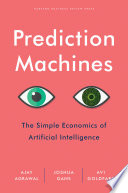

At the heart of artificial intelligence (AI) lies the ability to make predictions. This foundational concept is critical for understanding how AI can be leveraged across various industries. The authors elucidate that predictions can reduce uncertainty in decision-making processes, allowing businesses to allocate resources more efficiently and effectively. By framing AI as a 'prediction machine,' the book highlights that the primary utility of AI lies in its ability to forecast outcomes based on historical data. This shift in perspective encourages organizations to rethink their strategies and operations, focusing on how predictive analytics can enhance their performance and competitive edge.
Continue readingThe book emphasizes the importance of data quality and quantity in improving predictive capabilities. The authors argue that the more data an organization has, the better its predictions will be. This is due to the fact that AI algorithms learn from vast datasets to identify patterns and trends. Organizations are encouraged to invest in data collection and management systems to ensure they have access to high-quality data. Furthermore, the book discusses the implications of data privacy and ethical considerations in data usage, urging businesses to adopt responsible practices while harnessing data for predictive analytics.
Continue readingOne of the significant advantages of utilizing AI for predictions is the potential for cost reduction. The authors explain that by automating decision-making processes and minimizing human error, businesses can significantly lower operational costs. Additionally, predictive analytics can lead to better resource allocation, reducing waste and inefficiencies. The book provides examples of industries that have successfully implemented predictive technologies to streamline operations and enhance profitability, demonstrating the tangible benefits of integrating AI into business models.
Continue readingThe authors argue that the ability to make accurate predictions can fundamentally transform business models. Companies can move from traditional reactive strategies to proactive approaches that anticipate customer needs and market trends. This transformation allows businesses to innovate their offerings and tailor services to meet specific demands. The book showcases case studies from various sectors, illustrating how organizations have successfully adapted their business models by leveraging predictive analytics to gain a competitive advantage.
Continue readingWhile AI and predictive analytics offer powerful tools for decision-making, the book underscores the importance of the human element in interpreting predictions and making final decisions. The authors stress that AI should augment human intelligence rather than replace it. They highlight the need for skilled professionals who can understand AI outputs and integrate them into the broader context of business strategy. This discussion emphasizes the balance between technology and human judgment, advocating for a collaborative approach where AI enhances human capabilities.
Continue readingAs organizations increasingly rely on predictive analytics, ethical considerations become paramount. The book discusses potential biases in AI algorithms and the implications for decision-making. The authors advocate for transparency and accountability in AI systems to mitigate risks associated with biased predictions. They also explore the future of prediction technologies, emphasizing the need for ongoing discussions about ethics and governance in AI. This forward-looking perspective encourages readers to consider the broader societal impacts of predictive analytics.
Continue readingThe final key idea revolves around the strategic implementation of predictive technologies within organizations. The authors provide a roadmap for businesses looking to adopt AI-driven prediction tools, emphasizing the importance of aligning technology with organizational goals. They discuss the need for cross-functional collaboration and the importance of fostering a culture that embraces data-driven decision-making. The book concludes with practical insights on how to integrate predictive analytics into existing processes, ensuring that organizations can fully leverage the benefits of AI.
Continue reading